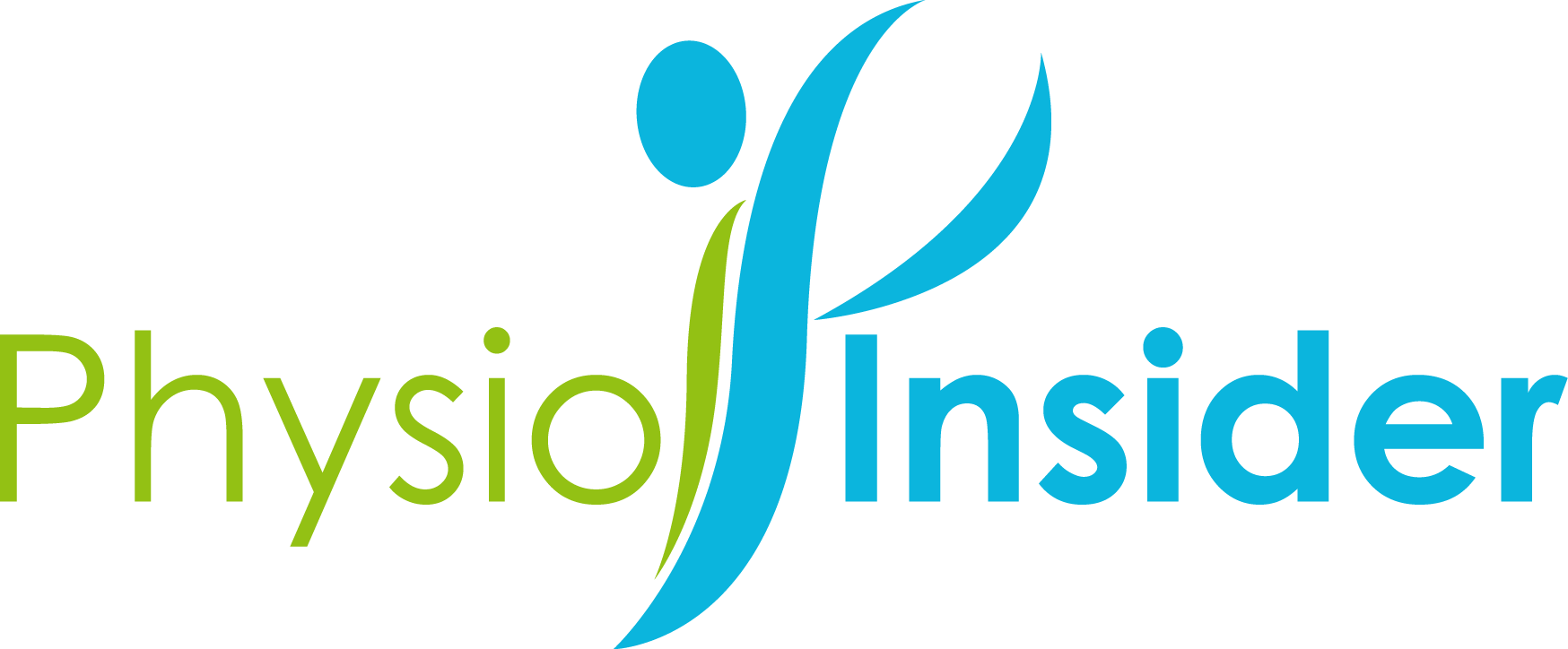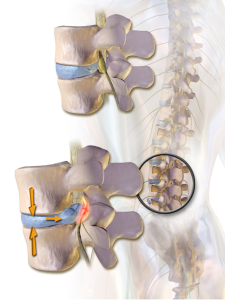Direct source of pain:
All structures such as bones, muscles, ligaments, tendons, discs, etc. that receive innervation from the brain are potential sources of pain. When damaged or injured, these structures would “report” back to the brain as to warn the brain that a particular structure is injured and not to force it further to the point of damage.
Referred source of pain:
Example: Herniated Disc (image below)
Herniated Discs are diagnosed by clinical findings and subjective account of what reproduces the pain. Typical findings would be pain starting at the back radiating downwards. Nevertheless, it is possible that there is only pain on an isolated part in the leg and no pain at the back or vice versa.
For the aforementioned reasons, herniated discs are sometimes under diagnosed due to fact that not everyone presents with the textbook depiction of an herniated disc.
Dysfunction at the cervical spine (neck) can refer pain from the shoulder all the way down to the finger tips. Similarly, herniated disc or even the sacro-iliac joints can refer pain to the legs all the way down to the toes. It is essentially very important to track the source of the pain and treat accordingly. A stroke patient may present with pain in the jaws, the chest area, or the shoulders left more often than right. However, stroke patients would not get better if we treat their jaws, chests or shoulders!
The most challenging aspect faced with identifying the source of pain is that we do not often get textbook cases in which pain starts from say the neck and travels all the way to the elbow for example. More and more, we see patients with isolated pain at the elbow but no report of neck pain, yet the source of pain originates from the neck. In this case, treating where it hurts might provide temporary relief but the pain would often persist until we fully address the neck problem.
So often in the medical world, we are focused on getting a diagnosis or any diagnosis and we would do whatever it takes to protect and defend it. This arrogance can lead to misdiagnoses and improper management of medical conditions. Careful assessment of all potential sources of pain and constantly challenging one’s diagnosis is what it takes to offer the greatest quality of care.


